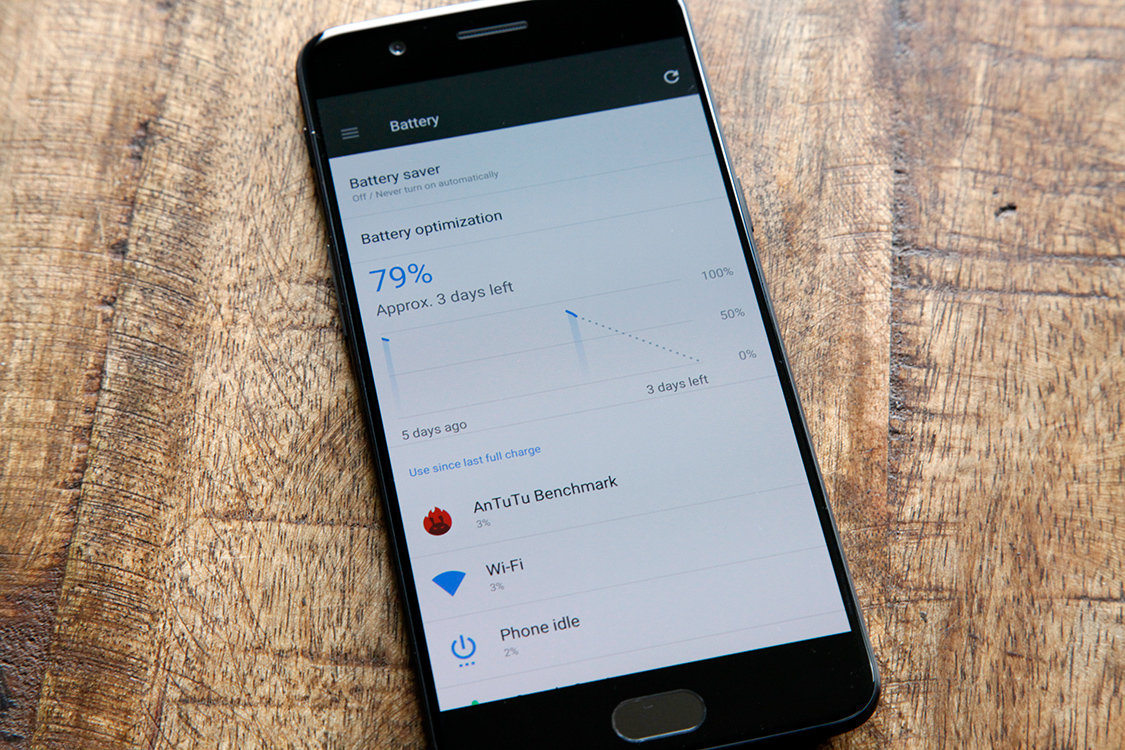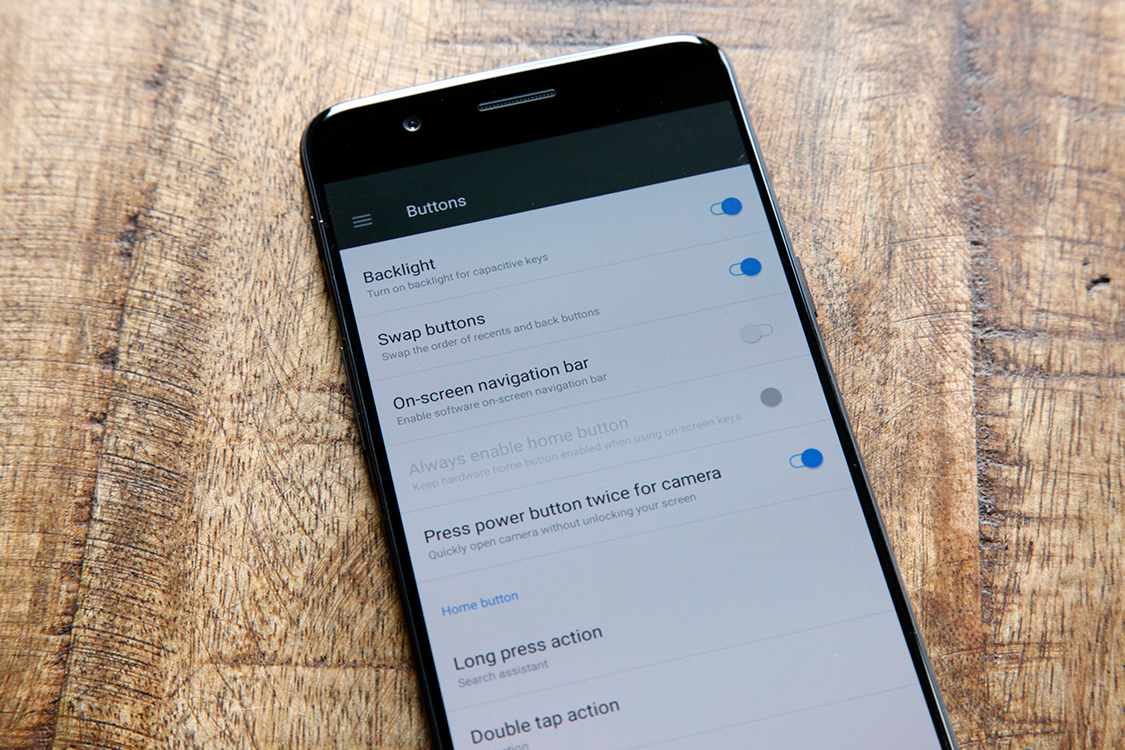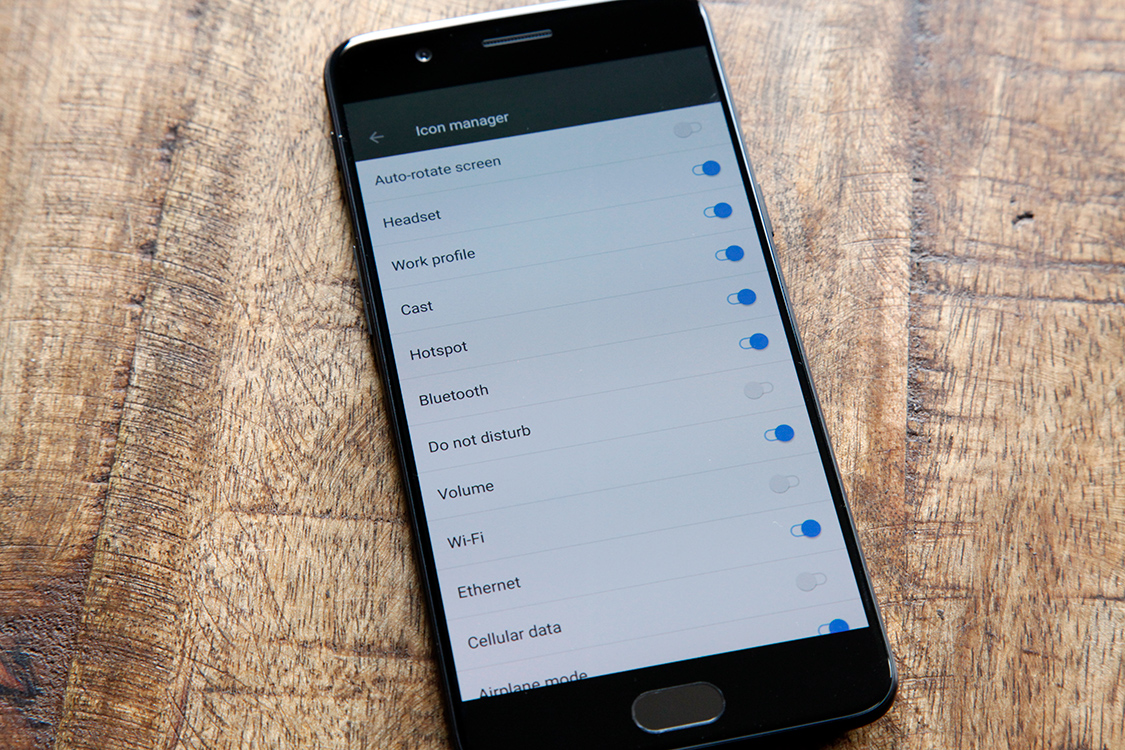OnePlus 5 Review
With a slogan like "Never Settle" and ongoing interest from the most savvy and advanced Android users in the world, OnePlus has no choice but to deliver something truly impressive each and every year when it launches its next-generation flagship smartphones. Hardcore Android fans are some of the most critical smartphone users in the world, demanding tremendous power, smooth performance, and killer value if they are to consider any phones that aren't "pure Android" devices from Google. Despite sky-high expectations surrounding its recent smartphone releases, OnePlus has managed to come through. Branded by some as flagship killers, OnePlus' phones regularly offer premium specs and performance that are priced far lower than comparable smartphones sold by big-name vendors like Samsung and Apple.
The just-announced OnePlus 5 doesn't come as much of a surprise to Android fans, since details surrounding the phone have leaked so extensively over the past month. Leaks never paint a complete picture though, and such is the case with the hot new OnePlus 5.
Let's begin with the elephant in the room: The OnePlus 5's design.
Dozens of official renders of the OnePlus 5 leaked ahead of the phone's unveiling on Tuesday, and people were concerned. In these renders, the OnePlus 5 looked almost identical to Apple's iPhone 7 Plus — which, by the way, sports a design that is now three years old. As a result, the first question on everyone's mind now that the OnePlus 5 has been unveiled is obvious: Is OnePlus' new flagship phone really a carbon copy of Apple's phablet?
Well, it's complicated.

In person, the OnePlus 5 doesn't look exactly like it does in the renders, which is a good thing because the renders make it look like the most blatant iPhone 7 Plus ripoff ever. The shape of the OnePlus 5 is actually a bit different from the iPhone, and it feels nothing like Apple's handset when you hold it.
That said, there is no denying that this new OnePlus phone bears a striking resemblance to the iPhone 7 Plus. In fact, despite all of the phones out there that have been called iPhone copycats in the past, there is only one other phone I've seen that resembles an iPhone as closely as the OnePlus 5.
The color and finish of the OnePlus 5 are identical to the aluminum on the black iPhone 7 Plus. The mirror finish of the OnePlus logo on the back of the phone is identical to the mirror finish of the Apple logo on the back of the iPhone. The pattern of the antenna bands is almost the same, the placement of the dual-lens rear camera is almost the same, and the positioning of the rear-facing mic and the LED flash assembly are the same.

Honestly, this is all a bit embarrassing for OnePlus. The OnePlus 5 certainly does have some of the design elements that were found on earlier OnePlus phones, just as the HTC One A9 had design elements from other HTC One series phones. But iPhones are the most popular smartphones on the planet. If a company takes bits of pieces of its earlier designs and morphs them into an iPhone clone, people are going to notice. It looks like an iPhone.
To OnePlus' credit, the OnePlus 5 packs a 5.5-inch 1080p display into a phone that is more compact than Apple's iPhone 7 Plus. The OnePlus 5 is 154.2mm tall and 74.1 mm wide, while the 7 Plus measures 158.2mm tall by 77.9mm wide. OnePlus' new flagship is also 7.25mm thick compared to the 7.3mm-thick iPhone 7 Plus, and it feels even thinner thanks to the shape of the back, which becomes significantly thinner toward the edges thanks to the curved design.
There's one last area where the OnePlus 5 has been criticized as being an iPhone 7 Plus copy, and that's the rear camera. Bad news: It's even more of an iPhone ripoff than you thought.

Apple wasn't the first smartphone maker to add a dual-lens rear camera to a handset, but earlier companies used the dual-lens setup in different ways. Apple uses it for two main purposes. First, the second lens is actually a telephoto lens, so the iPhone 7 Plus is capable of 2x optical zoom. Second, the telephoto lens can collect depth data when the iPhone 7 Plus is in Portrait Mode, and then use that data to blur the background of a photo, similar to the way a DSLR camera creates a bokeh effect.
Guess how OnePlus uses the dual-lens rear camera on the OnePlus 5...
Not only does the camera on the back of the OnePlus 5 ape the iPhone 7 Plus' two main features — 2x optical zoom and bokeh portraits — but the UI of the telephoto zoom feature is even stolen from iOS. Seriously, you can't make this stuff up:

Left: iPhone UI / Right: OnePlus 5 UI
Did OnePlus really have to make the telephoto zoom button look exactly the same as it is in iOS? Did the button also have to be in the exact same spot?
When asked about the striking similarities between the camera interfaces and the phones' designs in general, a OnePlus executive told me that OnePlus tries to offer users an experience they're used to, and never tries to be different just for the sake of being different. Fair enough. I was also given the same response when I asked why OnePlus didn't try to use an all-screen design similar to what we've seen on phones like the Galaxy S8 and LG G6.
The good news is that the quality of photos and videos captured by the OnePlus 5's camera is dramatically improved compared to earlier OnePlus phones. In fact, I might even put the photo quality on par with market leaders like the HTC U11, Galaxy S8, Google Pixel, and iPhone 7 Plus.

OnePlus' dual-lens rear camera system on the back of the OnePlus 5 marries a 16-megapixel Sony IMX 398 wide-angle sensor with a 20-megapixel Sony IMX 350 telephoto sensor. The resulting photos have vibrant colors and impressive clarity in ample lighting. Low-light performance is improved as well, though not quite on par with some other leading devices. There's also a very comprehensive pro mode that gives the user pinpoint control over every key setting and supports shooting in RAW.
My biggest complaint about the camera is the quality of Portrait Mode photos, which is nowhere near as good as what Apple has achieved on the iPhone 7 Plus. In my test photos, I found that the edges of my subject were often blurred or distorted rather than sharp against the blurred bokeh effect in the background. In other words, the depth effect often spills over onto the subject. It's worth noting that my OnePlus 5 review unit is running pre-release software, though it's unclear if there will be any improvements to the depth effect feature at launch.
With all that out of the way, let's move to the inside of the OnePlus 5, where OnePlus has once again managed to engineer a smartphone with bleeding-edge specs that will be sold for far less than comparable big-name handsets.

The OnePlus 5 specs sheet reads like a hardcore Android fan's dream, almost from start to finish. In the driver's seat is a Qualcomm Snapdragon 835 octa-core chipset that hits a maximum clock speed of 2.45GHz. Supporting the CPU is either 6GB of LPDDR4X RAM and 64GB of UFS 2.1 storage in the base model, or 8GB of LPDDR4X RAM and 128GB of storage in the high-end OnePlus 5.
The 5.5-inch AMOLED display is covered by 2.5D Gorilla Glass 5, and it features a 16:9 aspect ratio, 1080p resolution, and a pixel density of 401 ppi. OnePlus chose not to make the leap to a 2K display like many other smartphone makers, citing battery life as the main reason behind it.
Personally, I'm fine with the company's decision. The screen isn't quite on par with the likes of the Galaxy S8, but it's a stunning display with deep blacks, colors that pop, and terrific clarity. I wholeheartedly appreciate the prioritization of battery life over ultra-high pixel density that most human eyes can't even discern.

Where battery life is concerned, the OnePlus 5 has a 3,300 mAh battery compared to the 3,400 mAh battery in last year's OnePlus 3T. Don't let that fool you, however — thanks to more efficient components like the Snapdragon 835 and newer LPDDR4X RAM, the OnePlus 5 actually lasts an average of 20% longer per charge than the OnePlus 3T, according to OnePlus. In my tests, the battery was indeed able to carry me through a full day of normal usage.
OnePlus' proprietary Dash Charge technology is also present on the OnePlus 5, and it's just as impressive as it has been in the past. OnePlus markets it with the tag line "a day's power in half an hour," meaning that a 30-minute charge will give the user enough power to last the day. I didn't use a stopwatch to time each charge during my testing, but I can assure users that this tech is just as fast as any leading technology on the market right now, if not faster.
In my unscientific tests, Dash Charge was far faster than the Galaxy S8 and possibly even a bit faster than the Moto Z2 Play. According to OnePlus, the OnePlus 5 charges from empty to full 98% faster than the Galaxy S8 and 52% faster than the Google Pixel with the displays on.
Also of note is the fact that unlike most popular smartphones, the OnePlus 5 is truly a global flagship phone. It's sold unlocked with dual SIM support, and there's only one SKU that packs a whopping 34 different GSM bands. In other words, it'll work just about anywhere with just about any carrier.

The latest version of OxygenOS is found on the OnePlus 5, and it's based on Android 7.1.1 Nougat. As has been the case in previous years, OxygenOS looks and feels just like pure Android, featuring only a handful of tweaks here and there that add real value to the user experience.
Here are some of my favorites:
- Reading Mode: This is a special feature that puts the display in a grayscale mode that looks similar to E Ink, making it perfect for extended reading. The OnePlus 5 also lets you configure Reading Mode to be automatically enabled when you open specific apps (any installed app is supported).
- Night Mode: Similar to Apple's Night Shift feature, Night Mode reduces blue light to minimize eye strain in the dark.
- Gaming Do Not Disturb Mode: This is a special mode that will still vibrate with new alerts, but no on-screen notifications will be displayed so as not to disturb gameplay. Like Reading Mode, this feature can be automatically enabled on a per-app basis.
- App Priority: This feature keeps frequently used apps in cache so that they load more quickly when opened.
- Status bar customization: This is another nifty unique feature that lets the user decide which information will be displayed in the status bar. For example, I have great service everywhere around me so I removed the cellular signal strength and Wi-Fi signal strength icons.
- Buttons and Gestures: Like earlier OxygenOS builds, the OnePlus 5 allows you to customize the functionality of your buttons, and enable or disable a wide range of motion- and touch-based gestures.

For all the "normals" out there, it's easy to focus on what the OnePlus 5 doesn't have. For example, the phone doesn't have an all-screen design, a big-name company behind it, or sales support from carriers in the United States. You cannot walk into your local wireless store and buy one on a monthly payment plan.
Of course, savvy Android fans aren't "normals." This is a phone geared specifically toward prosumers, and it's a fantastic option. Power and performance are on par with the best big-name smartphones in the world, the user experience is as smooth as I've seen on any Android phone, and the camera is dramatically improved. What's more, the OnePlus 5 will be available for much less than most flagship phones.
OnePlus will sell two different versions of the OnePlus 5 beginning June 27th on oneplus.net. A Slate Gray model with 6GB of RAM and 64GB of storage will cost $479, while a Midnight Black version with a whopping 8GB of RAM and 128GB of storage will sell for $539. Both colors look very similar, though the Midnight Black — which is identical to Apple's matte black on the iPhone 7 Plus — is a bit deeper.

Last year's OnePlus 3T started at $439, so this year's model is more expensive. But to compare the OnePlus 5's pricing to current market leaders, Samsung's 64GB Galaxy S8 starts at $625, which is $146 more than the base OnePlus 5. Apple doesn't sell a 64GB iPhone anymore, but the company's 32GB iPhone 7 (with a 4.7-inch screen) costs $649, which is $170 more than the entry-level OnePlus 5 despite only having half as much storage.
For those who can't wait until the 27th to pick up a OnePlus 5, there's are actually some pop-up sales events where local customers will have the opportunity to buy a OnePlus 5 before anyone else. In the United States, the pop-up event takes place tonight, June 20th, at the Magnum ice cream store at 875 Washington Street in Manhattan. Doors open at 7:00 PM, but you'll want to line up early to have a chance to buy one. Internationally, pop-up sales events will take place on June 21st in London, Berlin, Paris, Amsterdam, Helsinki, and Copenhagen.
